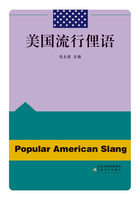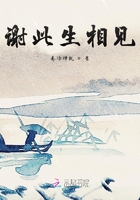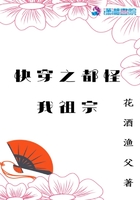You know that the skull is merely a hollow box intended to hold and protect the brain. You know, too, that this box rests on the topmos vertebra, to which it is jointed by a double-hinge joint. In the floor of the box, and just where it rests on the vertebra, there is a round hole, and in this vertebra, as well as in every one of the vertebra in the column, is a corresponding hole.
These vertebrae standing one above the other as we might stand a string of reels, form a long continuous tube from the bottom of the column upwards to the skull. We call this tube the vertebral canal, or the spinal canal.
The brain fills the whole cavity of the skull and a portion of it extends downwards from the skull and fills the spinal canal. This part is known as the spinal cord.
This brain matter is totally different from the muscles or flesh. It is a soft grayish-pink substance, more like marrow than flesh. From the brain and spinal cord extend outwards through the body long, white, silvery- looking threads-the ner ves. Some of these ner ves spread themselves all over the surface of the skin, and it is through them that we are able to feel the hardness orsoftness, the heat or cold, the roughness or smoothness of various bodies. Others spread themselves among the muscles of the body. They are the foremen or overseers who set the muscles to work.
When we wish to lift our hand or turn our head, it is the nerves that make the muscles do our bidding. If the ner ves were destroyed or injured (as they are sometimes by paralysis), we should find ourselves quiteunable to lift the limb, however much we might wish to do it.
But whence do the nerves get their orders? The brain is the chief center. The nerves may be aptly compared to a multitude of telegraph wires stretching into every part of the body. They carry messages to and fro.
Let me give you an idea of the kind of messages they carry. What would you do if someone, without your seeing him, placed a hot poker near your hand? You would instantly draw your hand away. To you this would appear the simplest of actions, but in reality the nerves have been very busy. Some of them first carried up a message to the brain, to say that the hand was being burned, then thebrain sent back, by another set of nerves, an order to the muscles to pull the hand away. The muscles would not act without this order.
But besides being the overseer of the muscles and their work, the brain is the seat of the will, the intellect, the memory, the emotions and affections. Moreover, it is by the brain and its nerves that we see, hear, smell, taste, and touch.
Lesson 16
第16章Timber-Its Shrinkage and PreservationOur last lesson on timber dealt with the methods of seasoning the wood to render it fit for use. During the seasoning process the wood shrinks, but always according to a natural law. The amount of shrinkage in length is so small that it may be altogether disregarded. The shrinkage takes place in the breadth of the plank.
If we think of the structure of the exogenous stem we shall see at once the reason for this. The woody fibers are arranged lengthwise down the stem in irregular circles, and these fibers are bound together by the radiating plates, known as the medullary rays or the silver grain. This silver grain is not of the same nature as the woody fibres. It resembles the pith in structure. As the drying process of the seasoning goes on, the woody fibers contract or shrink in bulk. But they can only shrink by tearing away, at the same time, the substance of the medullary rays. That is to say, the shrinking of the woody bundles finds relief by splitting the timber in the direction of the medullary rays. This explains why timber, after it is cut, and before it is properly seasoned, always cracks and splits on the outside more than the inside of the mass.
It is interesting to note the behavior of a trunk of one of the stronger exogenous woods, such as oak or beech, when it is cut up into planks. Imagine a trunk cut lengthwise by the saw into seven planks. After the planks had been properly seasoned, the middle one would be found to retain its original thickness in the center, but the edges of the board would be thinner. The breadth of the plank would remain the sameas at first. The medullary rays, being closer together towards the center of the trunk, offer greater resistance there to the tearing than at the edges. The planks on either side of the middle one would, from the same cause, become bent outof shape, or pulled round into a convex from the center of the trunk, and each board would be narrower.
Timber, even after it has been well seasoned, is liable to decay from many causes. Moisture and changes in temperature are its worst enemies. They not only lead to the decay of the wood, but they encourage the attacks of insects and worms, and the wood gradually crumbles away. Where timber structures have to be exposed to changes of air, light, heat, and moisture, something must be done to protect them from the effects of all these.
All woodwork is covered with a coating of paint or tarfor this very purpose. Both these substances are impervious to water, and will not allow the wet to penetrate into the wood. Tar itself, moreover, is a powerful preventer of decay. This explains why, in fixing a wooden post into the ground, we soak the lower end in tar, or stand it in pitch, and why ships, boats, and barges are always kept well painted and tarred.
Another enemy to timber structures is dry rot The simplest and best way of preventing this is to saturate the wood in oil.
Lesson 17














